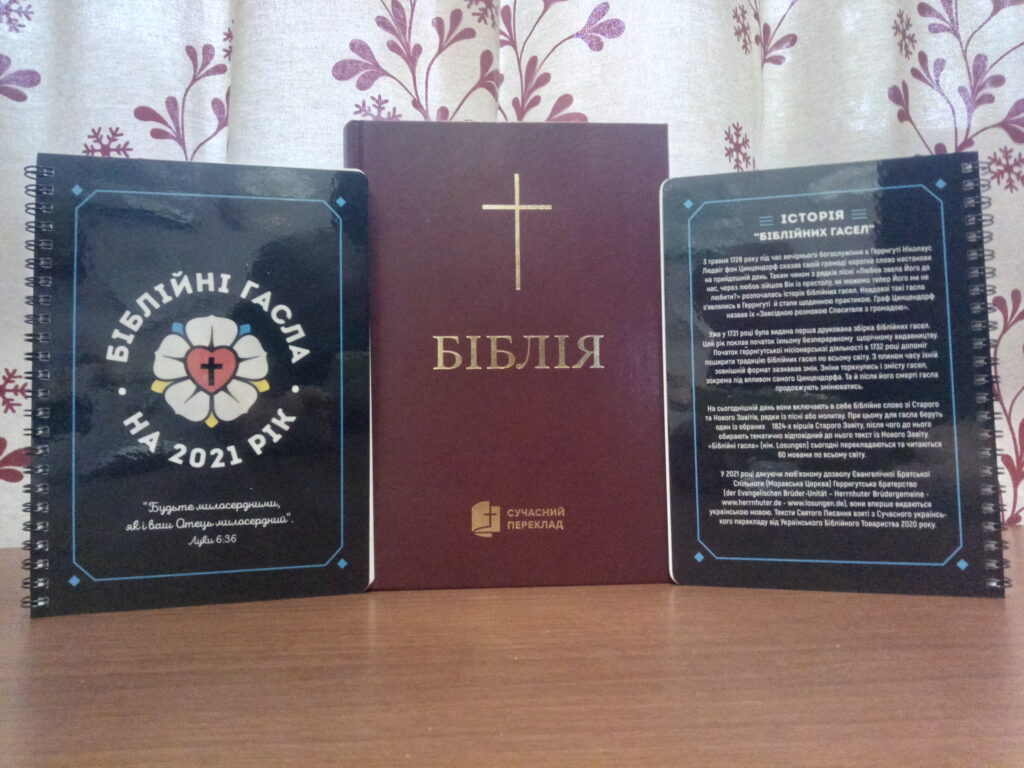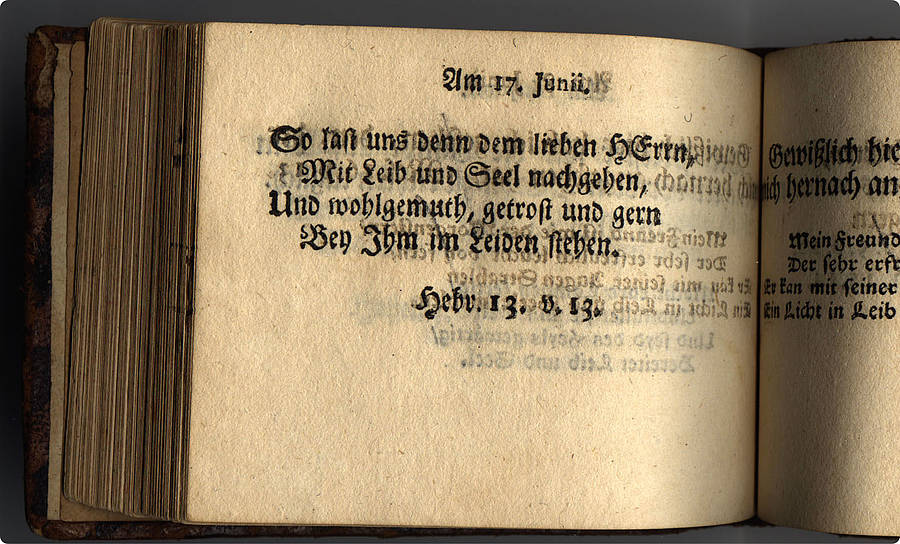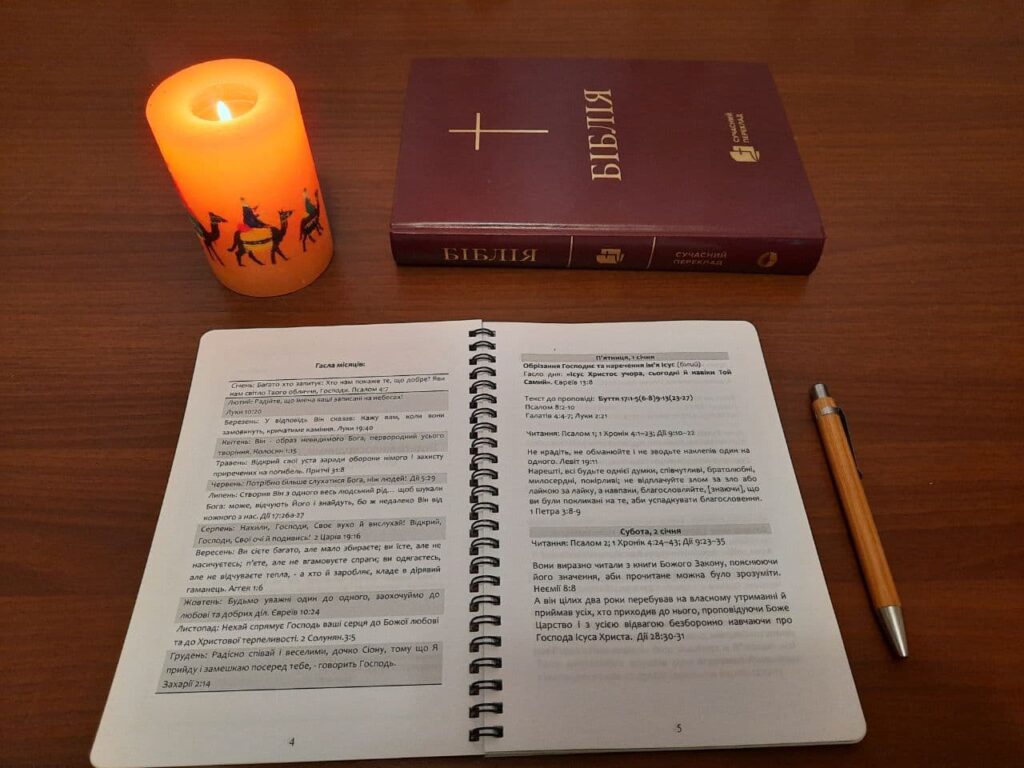German Evangelical Lutheran Church of Ukraine in partnership with congregations of the Communion of Reformed Evangelical Churches and thanks to support from Martin-Luther-Verein, has published Daily Texts (Losungen) 2021 handbook in Ukrainian language.

The first printed edition of the Daily Texts (Losungen) was published in Herrnhut, Saxony, in 1731. The title page of that edition quoted the passage from Lamentations and promised a daily message from God that would be new every morning. It was an outgrowth of a spiritual renewal of the Moravian Church (Unitas Fratrum) that dated from August 13, 1727.
In 1722 refugees from Bohemia and Moravia began arriving at the estate of Count Nicholas Ludwig von Zinzendorf (1700-1760), where he gave them a welcome and land on which to establish the settlement of Herrnhut (“Watch of the Lord”).
Each day the settlers came together for morning and evening devotions, consciously placing their lives in the context of God’s Word. On May 3, 1728, during the evening service, Count Zinzendorf gave the congregation a “watchword” for the next day. It was to be a “Losung” (watchword) to accompany them through the whole day.

Thereafter one or more persons of the congregation went daily to each of the 32 houses in Herrnhut to bring them the watchword for the day, and engage the families in pastoral conversations about the text.
From this oral tradition, the Daily Texts soon became fixed in printed form. Zinzendorf compiled 365 watchwords for the year and the first edition of the Losungen was published for 1731.
Even in the first editions there appeared the characteristic coupling of a Bible verse and hymn stanza. Zinzendorf called the hymns “collects” and considered them to be the answer of the congregation to the Word of God. The Daily Texts would be a great deal poorer without the mixture of God’s Word and our human response.
The watchword soon became accompanied by a “doctrinal” text. The idea of an additional text grew out of a number of collections of texts from the Bible that were put together by Zinzendorf. Such additional lists (some of them for children) were used for special study within the groups in the community, and they came to be referred to as doctrinal texts.
For the Daily Texts, as for the whole Moravian Church, Count Zinzendorf’s death (May 9, 1760), was a turning point. His co-workers sensed the uniqueness of Zinzendorf’s watchwords, textbooks, and lessons and had them published at Barby-on-the-Elbe in a four-volume collection 1762.
From then on the watchwords and doctrinal texts are distinguished by the way they are selected each year. The watchwords are chosen from various verse collections and, since 1788, they have been drawn by lot from a collection of around 2,000 suitable Old Testament texts. The doctrinal texts are not chosen by lot but are selected. The difference between the watchwords and doctrinal texts was explained in 1801 as follows: “The watchword is either a promise, an encouragement, an admonition or word of comfort; the doctrinal text contains a point of revealed doctrine.”
By 1812 it was established that all watchwords would be drawn by lot from a selection of Old Testament texts, and the doctrinal texts would be selected from the New Testament. By the end of the nineteenth century, the custom was established to relate the two texts in theme or thought.
The idea to make a Ukrainian edition came up during the conference for GELCU and CREC ministers back in 2019, but was implemented only in a year’s time, after the complete edition of Modern Ukrainian translation of the Bible from Ukrainian Bible society was published, which texts of the Holy Scriptures were used.

The edition is made in a handy hard cover A5 format. Texts were typed by an elder of Reformed Church of Christ the Savior in Rivne – Pavlo Shevchuk and a pastor of GELCU – Igor Shemigon. Layout and editing were done by the Bishop Pavlo Shvarts. Design by Vira Agarkova. 250 copies were printed and distributed among congregations of GELCU and CREC.
Article used materials of the Moravian Church.
